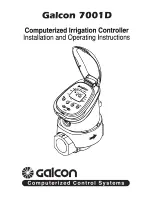
22
SPEAKER CONNECTION
(continued)
Passive bi-amping offers a dramatic improvement in clarity, openness and detail, with much
better bass solidity and definition. The presentation of music and movie soundtracks is
simply more intelligible and transparent.
With passive bi-amping, the speaker’s internal passive crossovers remain connected.
An external electronic crossover is not required and cannot be used (there is no direct
electrical access to individual drive units). This saves expense and setup difficulties. Passive
bi-amping optimizes your speaker to achieve the best possible high-end performance.
To bi-amplify, two power amplifiers are required. Connection can be either vertical
or horizontal.
Horizontal Bi-Amplification
Horizontal Bi-Amplification (shown on previous page) dedicates one amplifier to your
speakers’ mid/low-frequency inputs and another to their high-frequency inputs. This
configuration can maintain better clarity when listening at loud levels—if low-frequency
demands cause amplifier clipping, distortion will still be kept away from high-frequency
drivers. Connect your speakers to one amplifier at a time.
Vertical Bi-Amplification
Vertical Bi-Amplification (not shown) dedicates one amplifier to each speaker. This
configuration provides complete channel separation, which optimizes your system’s
imaging ability. Connect your speakers to one amplifier at a time.
FINE TUNING
Once you have your speakers positioned in the room and have set speaker distances and
calibrated speaker levels through your A/V Processor or A/V Receiver, it’s time for a little
fine tuning.
Following the instructions in this Owner’s Manual, once you have your speakers
positioned in the room and have set speaker distances and speaker level calibration
with your A/V Processor or A/V Receiver, it’s time for a little fine tuning.
Since Paradigm Founder
speakers are designed to provide exceptional high-end
performance in a variety of room settings, fine tuning is simply a matter of making slight
adjustments to their placement in the room, if necessary.
Start with just the front speakers and listen to familiar music in stereo. The soundstage
will be both wide and deep, but this can be tuned to your personal preference by adjusting
the toe-in (the amount the speakers are turned toward the listening area). More toe-in
will increase image depth and localization; less toe-in will increase image width. Adjust
the toe-in in small increments, listening each time, until you achieve the soundstage
balance you prefer.
Toe-in is not applicable to the other speakers in your system since their position and
sound distribution pattern is fixed.
Fine tuning for the center channel is simply a matter of making level adjustments that
may be required for any particular multichannel music or movie program. If required,
adjust A/V Processor or A/V Receiver levels to ensure that there is always a cohesive
overall soundstage.
Содержание Founder Series
Страница 1: ...Owners Manual...
Страница 30: ...NOTES...







































